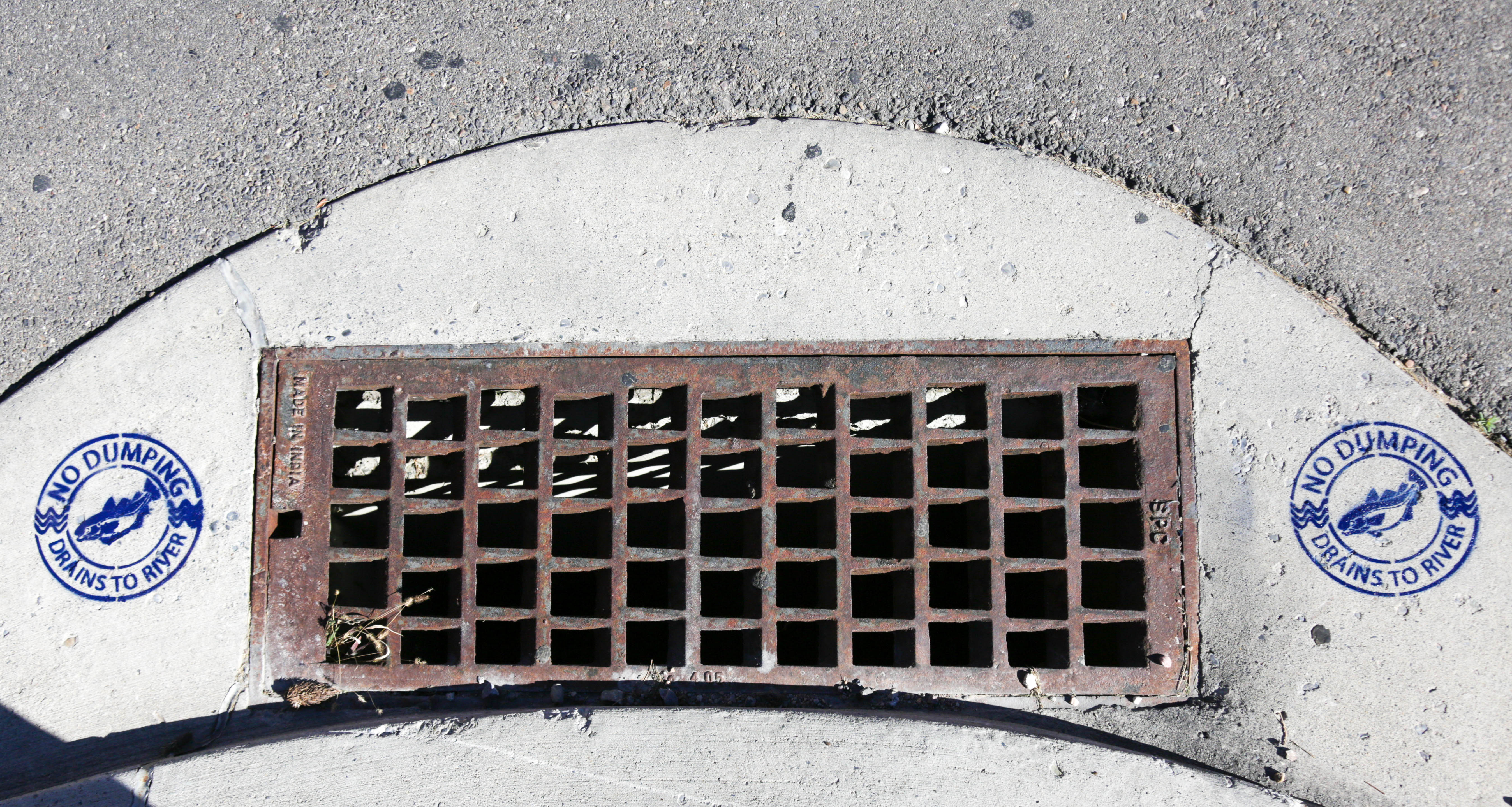Volunteers stencil ‘no dumping’ reminders by storm drains
It began when Arthur Wallis received a phone call from a staff member this summer.
She was concerned because some of her coworkers had been dumping material down a storm drain on campus. They didn’t seem to see a problem with it, but she — like Wallis — knew better.
In Logan city, the storm drains don’t lead to the waste water treatment plant — they join with the Logan River, Cutler Marsh and eventually Bear River.
The woman asked Wallis, who is an intern at the Utah State University water quality extension, if he had a stencil to label that specific drain with a warning not to dump materials down it. He said they didn’t, but he would look into it.
In the months following the phone call, Wallis teamed up with the College of Natural Resources Council to prepare to label all public storm drains through campus. On Saturday, the group executed their plan.
“It’s not just a storm drain. It’s a conduit, basically, to the river,” Wallis said. “And so if you can imagine dumping a bottle of chemicals in the river – even though it gets diluted pretty easily, it’s hard to justify that in most cases.”
After talking to the concerned staff member, Wallis spoke with water quality extension specialist Nancy Mesner. She was also interested in the idea of stenciling a reminder on the storm drains.
“We’re trying to get all these pollutants out, because the water picks up whatever is on the surface. If you’ve got a leaky car, soil from construction, fertilizer, pesticides, dog poop — it’s a nasty mix, and it all goes down the storm drains,” Mesner said.
Molly Van Engelenhoven oversees service on the Natural Resources Council, and she credits Wallis with catalyzing the plan. She said in addition to the chemicals getting dumped down the drains, they see some solid materials, as well.
“Mostly what we see getting dumped in the drains in glass clippings, which is biodegradable, but it’s still not a good thing to do,” she said.
Van Engelenhoven said she was excited about the opportunity to spend time serving with her fellow councilmen.
“I feel like doing service projects is a good way to get to know people,” she said. “We see each other in meetings, but we don’t have time to develop those personal friendships.”
There are two stencil designs — one reads “no dumping, drains to the river,” and the other reads “protect your groundwater, no dumping.” Both are painted Aggie blue.
“We don’t want to deceive the public or start a misinformation campaign — there are some that don’t actually go to the river. Some just go to these underground sumps,” Wallis said.
While that water doesn’t go to any canals or rivers, the pollution doesn’t necessarily disappear.
“That water eventually infiltrates into the ground, so any pollutants that are there could potentially get dumped into the wells,” he said.
Although the group originally estimated there were 170 drains on campus, there turned out to be a lot more.
“We got about half the drains stenciled,” Mesner said. “We’ll finish it up another day, either with other volunteers or possibly with some of my hourly workers.”
— brennakelly818@gmail.com

